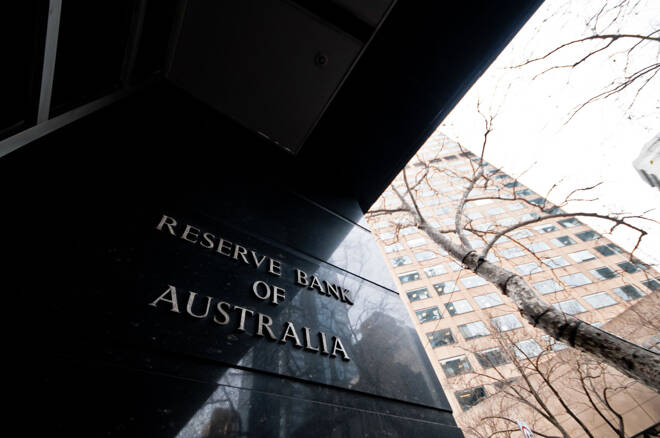Advertisement
Advertisement
RBA Statement on Monetary Policy Reveals Inflation Fear
By:
It was a busy start to the Friday session. The RBA Statement on Monetary Policy drew interest ahead of China's Caixin Services PMI and US Jobs Report.
It was a busy morning on the Asian economic calendar. Australian home loans and the RBA Statement on Monetary Policy drew interest ahead of China’s Caixin Services PMI.
In March, Australian home loans surged by 6.5% versus a forecasted 1.0% decline. Home loans fell by 1.2% in February.
While the home loan figures impressed, the RBA garnered more interest ahead of China’s Caixin Services PMI.
RBA Statement on Monetary Policy Shows Depth of Recession Concerns
Salient points from the RBA Statement on Monetary Policy included,
- Inflation has peaked in Australia but remains elevated.
- Strong demand and cost pressures (labor and non-labor) contributed to price increases across the services sector.
- The RBA expects headline inflation to fall to 4.5% by the end of 2023 and 3% by mid-2025.
- Labor market conditions remain tight, with the unemployment rate at its lowest level in nearly 50 years.
- Wage growth continues to accelerate while job vacancies have fallen.
- Despite wage growth, consumer spending slowed, with higher interest rates and inflation impacting household disposable incomes.
- The RBA expects economic growth to remain below trend before rising to 2% by mid-2025.
- Steadying house prices, strong labor market conditions, and accumulated savings should support consumer spending.
- Growth in Australia’s major trading partners is expected to remain below historical averages over the next few years.
- The Chinese economy has been recovering slightly faster than initially anticipated. However, the softer outlook for global growth suggests that Australia’s terms of trade are likely to decline near term.
- The Board remains committed to keeping the economy on an even keel as inflation returns to target. However, the path to achieving a soft landing remains a narrow one.
- In combating inflation, further tightening of monetary policy may be needed to ensure that inflation returns to the target in a reasonable time frame.
- The Board will pay close attention to developments in the global economy, trends in household spending, and the outlook for inflation and the labor market.
China Private Sector PMIs Signal Slower Growth
Considering the Board’s intentions to pay close attention to developments in the global economy, the latest round of private sector PMIs will give the RBA food for thought.
The Caixin Services PMI fell from 57.8 to 56.4 in April versus a forecasted 57.3. In April. The manufacturing sector unexpectedly contracted, with the Caixin Manufacturing PMI falling from 50.0 to 49.5.
AUD/USD Reaction to the RBA Monetary Policy Statement
Ahead of the RBA Monetary Policy Statement, the AUD/USD fell to a pre-stat low of $0.66915 before rising to a high of $0.67145.
However, in response to the RBA Monetary Policy Statement, the AUD/USD rose to a post-Statement session high of $0.67161. The weaker-than-expected Caixin Services PMI led to a brief pullback to $0.67040.
This morning, the AUD/USD was up 0.29% to $0.67117.
Next Up
It is a busy day on the US economic calendar. The US Jobs Report will be the main report of the day.
A pickup in wage growth and a jump in nonfarm payrolls would fuel bets on a June interest rate hike. However, a weak nonfarm payroll figure would weigh, with recessionary jitters gripping the markets.
Beyond the economic calendar, the banking sector, the US debt ceiling, and corporate earnings need consideration.
About the Author
Bob Masonauthor
With over 28 years of experience in the financial industry, Bob has worked with various global rating agencies and multinational banks. Currently he is covering currencies, commodities, alternative asset classes and global equities, focusing mostly on European and Asian markets.
Advertisement
